As a home cook, you have probably encountered both a Dutch oven and a roasting pan in your kitchen. But when it comes to cooking delicious meals, which is the better choice? That’s what we’ll be exploring in this comparison between Dutch ovens and roasting pans.
The two pieces of cookware have some similarities: both are great for baking, braising, roasting and more. However, they also have some key differences that can make one better suited for certain tasks than the other.
What Is A Dutch Oven?
A Dutch oven is a pot with a heavy bottom and a lid that fits tightly. It is typically designed for slow cooking and can be made of either cast iron or ceramic. The material it’s made from helps to evenly distribute heat, allowing you to simmer food without scorching it on the bottom.
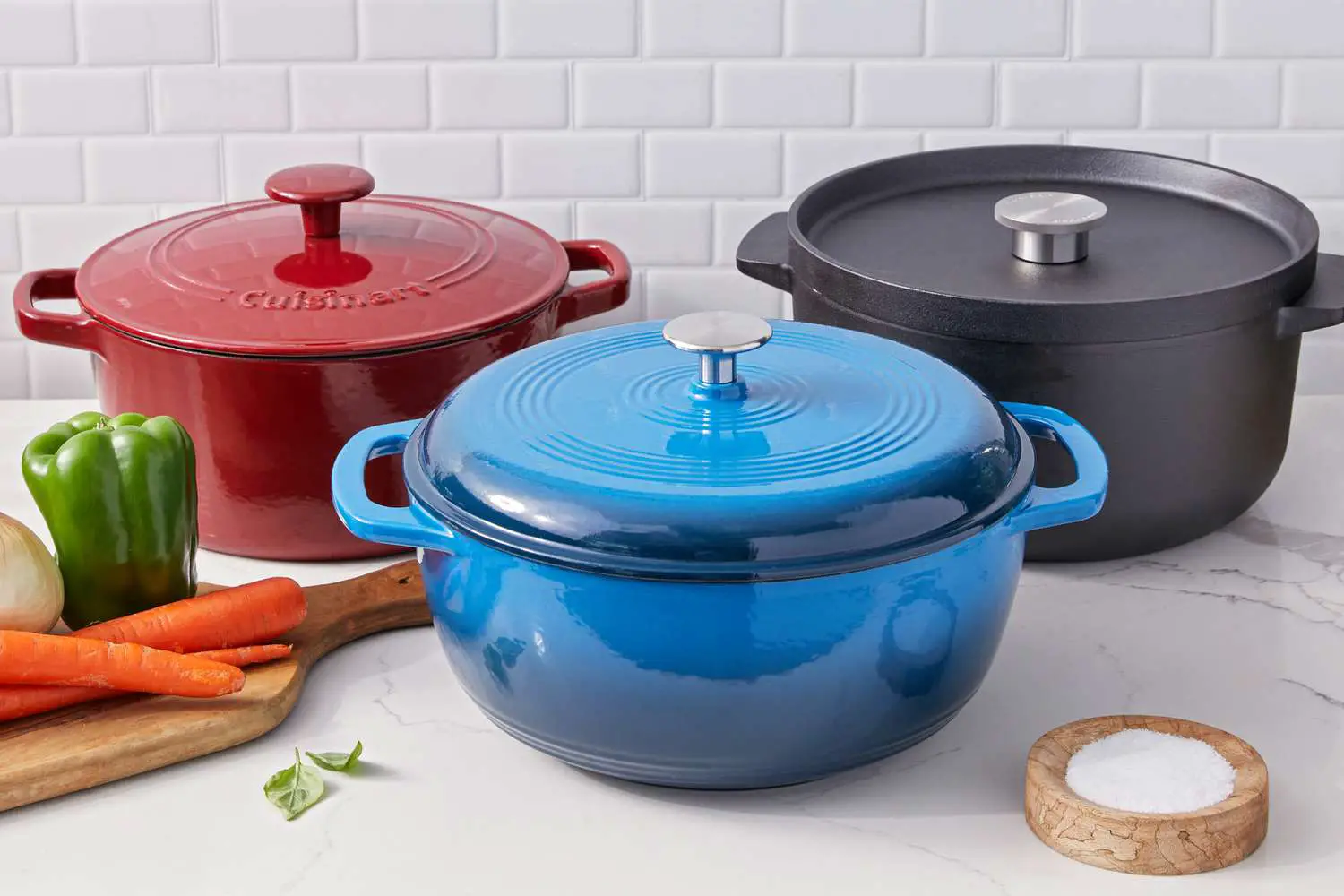
The tight-fitting lid locks in moisture, ensuring that food is cooked evenly and remains juicy. The heavy material also makes it ideal for browning and searing meat or vegetables prior to slow-cooking them.
Pros
A Dutch oven is a highly versatile tool for cooking delicious meals that every kitchen should have.
Consider these advantages when deciding between a Dutch oven and a roasting pan:
- Dutch ovens are highly durable and long-lasting because they are typically made of cast iron or enameled steel.
- They heat evenly, so you don’t need to worry about uneven cooking temperatures.
- The lids can also be used as skillets or baking sheets, giving you more options for meal preparation.
- Because they retain heat well, Dutch ovens can be used for slow-cooking dishes, so you can prepare flavorful meals that require longer cooking times.
Cons
Dutch ovens have some drawbacks, too. First, they are much heavier than roasting pans, weighing in at an average of 10-14 pounds. This makes them difficult to carry and lift when full.
Another point to consider is that Dutch ovens have thick cast iron walls and a heavy lid, which means they require more time to heat up compared to a regular roasting pan, and also take a longer time to cool down when cooking is finished.
The heavy cast iron material of a Dutch oven can make it challenging to clean. [1]
List Of Features Of A Dutch Oven
You can use a Dutch Oven, which is a weighty cast-iron pot with a snug lid, for cooking techniques such as baking, boiling, braising, and many others. It has several features that make it superior to a roasting pan:
- The thick walls of the Dutch Oven retain heat better than a flimsy roasting pan, allowing for more even cooking.
- The lid of a Dutch Oven seals in moisture and flavor, resulting in more tender and juicy meat or vegetables.
- The heavy base of the Dutch Oven prevents scorching on the bottom, ensuring that food cooks evenly without burning.
- Lastly, the enameled surface of a Dutch Oven resists sticking and makes for easy cleaning.
What Is A Roasting Pan?
A roasting pan is a big metal container that is generally used for cooking big pieces of meat like whole chickens and turkeys. It usually has two handles, and sometimes comes with a lid or cover.
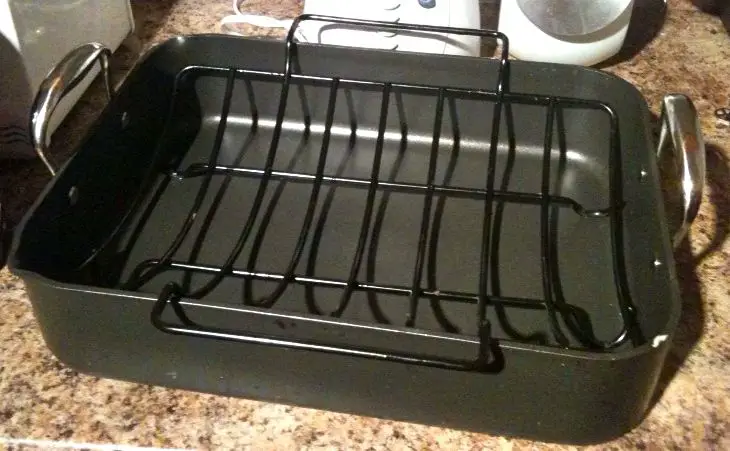
The base of the pan is usually made of thick aluminum or stainless steel, while the sides are often thinner than those found on Dutch ovens. The sides of the pan are usually sloped to allow fat and juices from the meat to drain away, leaving behind moist and flavorful food.
Pros of Roasting Pan
A roasting pan is ideal for larger cuts of meat, poultry, fish and vegetables. A standard one that is big enough to accommodate a large turkey or roast can be found in most kitchenware stores. Roasting pans have low sides which allow heat to circulate evenly around the food while cooking.
This ensures that it’s cooked more quickly and evenly. The low sides also make it easier to remove the food from the pan after cooking.
They generally come with a removable rack, which allows the fat and grease to drip away from the food while cooking, making it healthier. Roasting pans are also usually very easy to clean due to their non-stick surfaces.
Cons Of A Roasting Pan
A roasting pan is a great tool for making flavorful meals, but it has some drawbacks. It tends to be heavier and more cumbersome than a Dutch oven. This can make it difficult to move around and store in tight spaces.
Additionally, roasting pans typically have flat bottoms, which can cause hot spots when cooking on electric or gas stove tops. This can lead to uneven cooking, which can be a challenge when preparing certain dishes.
Roasting pans also require more oil and fat when roasting meats and vegetables, as the flat bottom does not provide enough insulation to prevent burning or sticking.
Finally, due to their large size and weight, roasting pans are often much more expensive than Dutch ovens. [2]
List Of Features Of A Roasting Pan
- A roasting pan is a large, deep-sided cooking vessel typically used to roast poultry, meats and vegetables.
- They are usually made of stainless steel, aluminum or other non-reactive material which allows for even heat distribution while cooking.
- Roasting pans often have removable racks inside that allow food to be placed closer to the heat source, allowing for more even cooking.
- The sides of roasting pans are generally low, making it easier to get close and baste the food with pan drippings or other liquids.
- They can also be used in the oven for baking dishes such as casseroles and lasagnas.
- Depending on the size and shape of the roasting pan, you may be able to fit a large turkey or other big pieces of meat inside for roasting.
- Roasting pans usually come with lids, making it easier to contain heat and moisture while cooking.
- Roasting pans are also good for browning meats before slow-cooking them in the oven.
- Roasting pans can also be used on the stovetop for tasks such as searing or sauteing.
They are generally easy to clean and maintain. [3]
Dutch Oven Vs. Roasting Pan: The Differences
The Dutch oven and the roasting pan both have their own distinct advantages when cooking food. When it comes to creating meals, each of these items of cookware have something unique and special to offer.
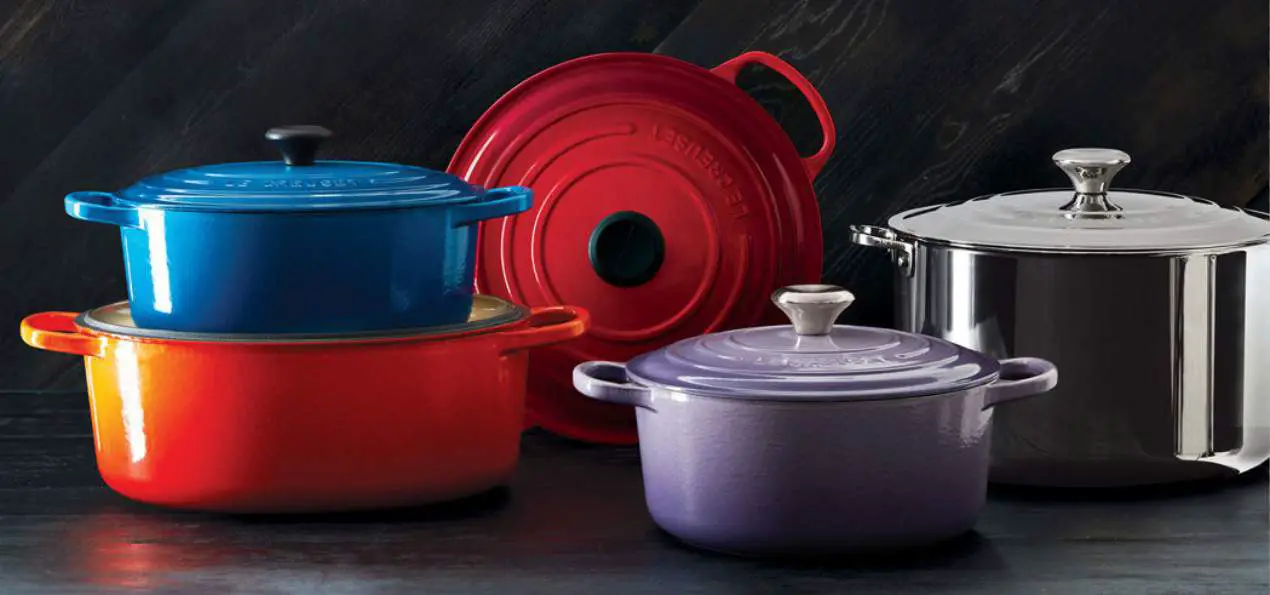
Size
When it comes to size, the Dutch oven wins hands down. Yes, you can find larger roasting pans out there, but they are much more expensive and difficult to store. A standard Dutch oven is usually quite compact and easy to store in almost any kitchen cabinet or cupboard, making it a great choice for those with limited space or storage.
The roasting pan, on the other hand, can be bulky and cumbersome, taking up valuable real estate in your kitchen.
Weight
When it comes to purchasing a roasting pan, or Dutch oven, for your kitchen, one of the main considerations is weight. A Dutch oven is typically made with heavier material such as cast iron, making it much heavier than a traditional roasting pan which are usually constructed from lighter materials like aluminum or stainless steel.
This means that if you are looking for something that will be easy to move around in your kitchen, a roasting pan is the better choice. On the other hand, if you prefer something sturdier and more durable, then a Dutch oven may be right for you.
Shape
When it comes to cooking, the shape of your cookware makes a difference. The Dutch oven is rounder and deeper than a roasting pan. This design allows for more liquid and food content to be cooked in one batch. It also helps keep moisture within the container longer, which can help create a richer flavor when making soups or stews.
The roasting pan, on the other hand, is shallow and rectangular in shape. This design helps to crisp up food faster because there is more surface area exposed to higher temperatures while cooking. It also makes it easier to use multiple pans in a single oven without overcrowding or overlapping.
Material
Dutch ovens and roasting pans are both available in a variety of materials, including aluminum, stainless steel, cast iron, and enameled cast iron. The type of material you choose will depend on your preferences in terms of weight and durability.
Aluminum is lightweight and provides good heat conductivity for even cooking. It is also less expensive than other materials, but is not as durable and can easily dent or scratch. Stainless steel is heavier and more durable, but it also conducts heat unevenly, so food cooked in a stainless steel roasting pan may need to be stirred frequently during cooking.
Cast iron Dutch ovens and roasting pans are extremely durable, able to last for many years if cared for properly.
They are also exceptional at retaining heat, making them very efficient for slow cooking and braising. The downside is that they are extremely heavy, so they may not be suitable for everyone. Enameled cast iron Dutch ovens offer the same durability of regular cast iron while being much lighter in weight, but may be more expensive.
Purpose
The purpose of this article is to compare and contrast a Dutch oven and a roasting pan. Both pieces of cookware are useful for preparing roasts, braised dishes, and other types of slow-cooked meals.
However, they each have their own strengths and weaknesses that should be considered when choosing the right one for your needs.
Cost
One of the major considerations when looking for cookware is cost. Dutch ovens and roasting pans vary greatly in price, from low-end models to expensive high quality versions. Generally, dutch ovens are more expensive than roasting pans. However, the price difference can depend on many factors such as size, material used and brand. In terms of cost, it really depends on what you are looking for and your budget. If you only need a basic cooking vessel, a roasting pan may be the more cost-effective option. [4]
Can A Roaster Pan Be Used As A Dutch Oven?
The short answer is yes, but it is important to be aware of the differences between a Dutch oven and a roasting pan before attempting to use them interchangeably.
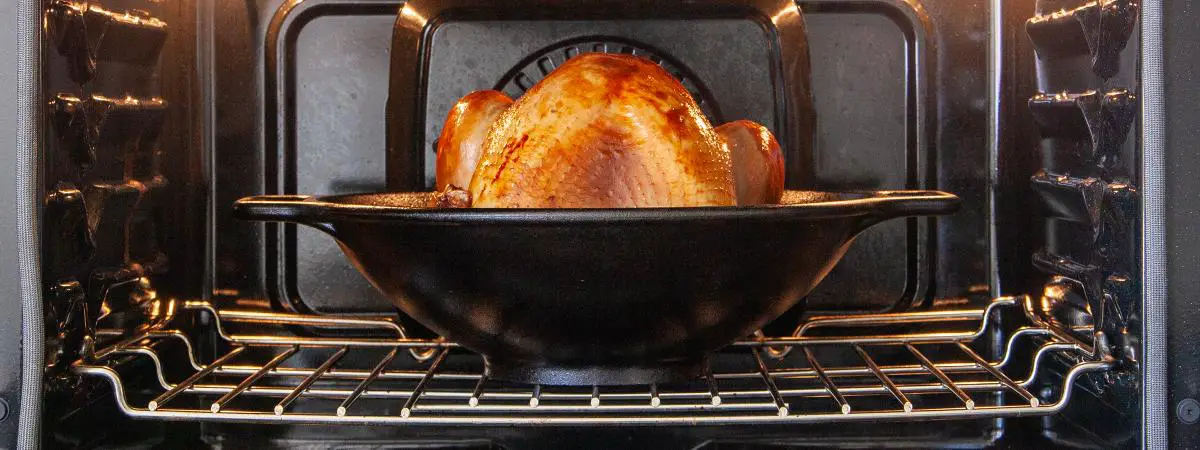
A Dutch oven has a thick base that holds the heat well, making for more even cooking. It also traps steam, creating a moist environment which prevents the food from drying out, and the lid provides a tight seal. A roasting pan has a thinner base which does not adequately retain enough heat for long-term cooking, so food can dry out quickly while cooking.
Additionally, roasting pans do not always come with lids, so they are unable to provide the same moisture-sealing benefit as a Dutch oven. [5]
FAQ
Can I use a roasting pan instead of a Dutch oven for bread?
No, a roasting pan is not suitable for baking bread. Bread requires a high temperature and the right amount of moisture to create an ideal crust and texture. A Dutch oven can provide this environment due to its heavy lid and ability to retain heat well, making it the perfect tool for baking bread.
Is a Dutch oven good for roast?
Yes, a Dutch oven is a great option for roasting. They are ideal for producing dishes with deep flavors and complex textures since their thick walls and tight-fitting lids retain the heat evenly and can hold large amounts of liquid or food.
This makes them perfect for braising, stewing, cooking soups and stews, as well as roasting. The tight-fitting lid also helps to keep the moisture inside, resulting in a juicy and tender roast.
Why is it better to cook in a Dutch oven?
A Dutch oven is a heavy-duty cooking vessel made from cast iron and has been used for centuries to cook meals over an open flame. The pot’s thick walls, lid, and tight-fitting seal trap in moisture, heat, and flavor better than any other type of cookware. The shape of the Dutch oven also allows it to be placed right in the coals of a campfire, using the heat from both above and below to evenly cook whatever is inside.
Because it is made of cast iron, a Dutch oven can also sear food quickly and evenly. This makes it perfect for browning meats before slow-cooking them over low heat. Furthermore, Dutch ovens are perfect for baking bread, stews, and casseroles.
What’s better than a Dutch oven?
When it comes to cooking at high temperatures, there’s no denying that a Dutch oven is the undisputed champion. With its heavy construction and superior heat retention, nothing else can compare. But when it comes to roasting meats and vegetables, a roasting pan may actually be the better choice. A roasting pan offers more space, allowing you to fit more ingredients into the same amount of space.
This can be especially helpful when cooking for a crowd.
Additionally, roasting pans usually come with a removable rack that allows fat and juices to drip away from the food, making it healthier and giving it a better texture. Roasting pans also come in a variety of sizes and shapes, so you can choose the one that best fits your needs.
Is a roasting pan the same as a Dutch oven?
No, they are not the same. A roasting pan is typically made from metal or stainless steel and has an open design with at least two handles on either side to make it easier for carrying or transport.

Roasting pans usually have a removable rack in the bottom which allows heat to circulate around whatever is being cooked without scorching the food.
A Dutch oven is a heavy, thick-walled pot which typically has two handles as well. It is usually made from cast iron and can be used for either stovetop or oven cooking. The lid of the Dutch oven sits tightly on top so that steam does not escape while it is cooking.
Can you bake with a roasting pan?
Yes, you can bake with a roasting pan. It is possible to bake casseroles and other dishes that require baking in the oven using a roasting pan.
Roasting pans are ideal for making roasted meats and vegetables because of their large size and ability to hold liquids.
However, when it comes to baking, a Dutch oven may be the better choice. Unlike roasting pans, Dutch ovens are designed for slow-cooking and baking, allowing food to cook evenly as heat is retained.
Thanks to their lids, Dutch ovens also help keep moisture in the food while they’re cooking so it doesn’t dry out or burn.
They are also more versatile, as they can be used for stovetop cooking and baking in the oven.
Ultimately, when it comes to choosing between a Dutch oven or roasting pan, it really depends on what you plan to cook. If you’re looking for a large vessel perfect for roasting meats and vegetables, then a roasting pan is the way to go.
Do chefs use Dutch ovens?
Absolutely! Dutch ovens are incredibly popular among chefs, and for good reason. For one thing, they’re versatile – you can use them for braising, browning meats, as well as baking. Plus, their heavy cast iron construction holds heat better than a roasting pan would, allowing you to get more consistent results from your dishes.
They also tend to last longer than roasting pans, so they’re an investment that will pay off in the long run. One caveat is that Dutch ovens can be quite heavy, even when empty, so if you have any mobility issues or limited strength in your arms and hands, a roasting pan might be the better choice for you.
Does food taste different in a Dutch oven?
The short answer is yes – food will taste different when cooked in a Dutch oven compared to a roasting pan. This is because the Dutch oven’s design allows for even heat distribution and insulation of moisture, both of which help create more flavorful dishes.
The cast iron material also conducts heat better than other materials like aluminum or stainless steel used for roasting pans. The lid of the Dutch oven also traps steam, which helps to keep food moist and tender.
Can you overcook meat in a Dutch oven?
If you are not careful with the temperature, it is possible to overcook meat in a Dutch oven. The heat of a Dutch oven is more intense than that of a roasting pan because it’s made from thick cast-iron material that retains heat well.
If you cook your food at too high of a temperature for too long, the meat can end up dry and tough. To prevent this, it’s important to monitor the temperature of your Dutch oven when cooking meat.
What are 10 reasons to use a Dutch oven?
These can be used for many cooking methods, including braising, simmering, boiling, baking, roasting, and deep frying because they are extremely versatile.
The heavy lid helps to lock in moisture and flavor when cooking meat dishes like stews or roasts.
Dutch ovens are made with heavy walls and bases that retain heat well, making them perfect for slow cooking dishes like soups or chili.
The tight seal created by the lid also ensures a more even temperature throughout the pot, resulting in more consistent results during cooking.
You can use Dutch ovens for cooking on the stove and in the oven, providing you with more cooking options.
The thick walls and bases of Dutch ovens also make them perfect for searing or browning meats because they can maintain high temperatures easily.
The heavy lid also helps reduce splattering and keeps food from drying out during extended cooking times.
They are an eco-friendly option since they don’t require as much energy to heat up as light-weight cookware does.
They are easy to clean and can usually be hand washed.
Dutch ovens come in a variety of sizes, making them perfect for large family meals or smaller individual servings.
Useful Video: Roasting Pan vs Dutch Oven
Conclusion
In conclusion, it’s difficult to determine which one is better between the Dutch oven and roasting pan. It ultimately depends on the type of dish you are making and the results you expect. Both tools have their own set of benefits and drawbacks that should be taken into consideration when deciding which one to use for your next cooking project. If you’re a beginner or simply like one option more than the other, either of these tools can provide an excellent cooking experience.
References
- https://sarahscoop.com/dutch-oven-vs-roasting-pan-the-difference-between-them-and-which-is-best-for-your-kitchen/#:~:text=using%20it%20for.-,If%20you%20are%20looking%20for%20an%20all%2Dpurpose%20cooking%20vessel,pan%20is%20the%20better%20option.
- https://worldofpans.com/dutch-oven-vs-roasting-pan/
- https://ilovecookware.com/dutch-oven-vs-roasting-pan/
- https://thekitchenjournal.com/dutch-oven-vs-roasting-pans/
- https://cooksdream.com/dutch-oven-vs-roasting-pan/





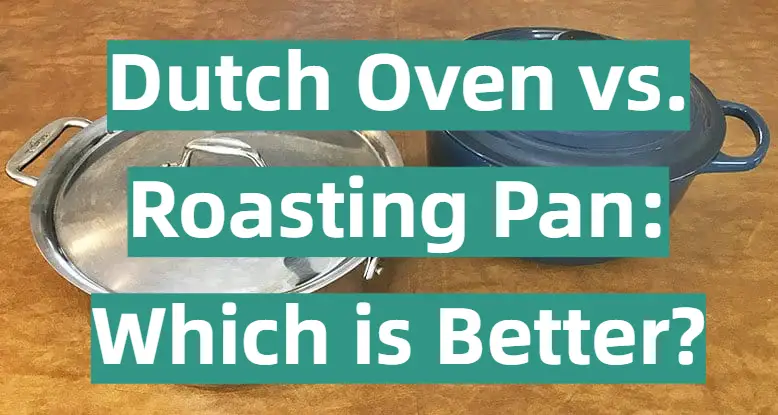





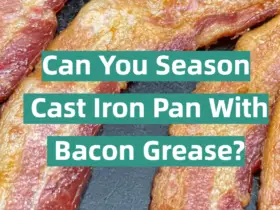

Leave a Reply